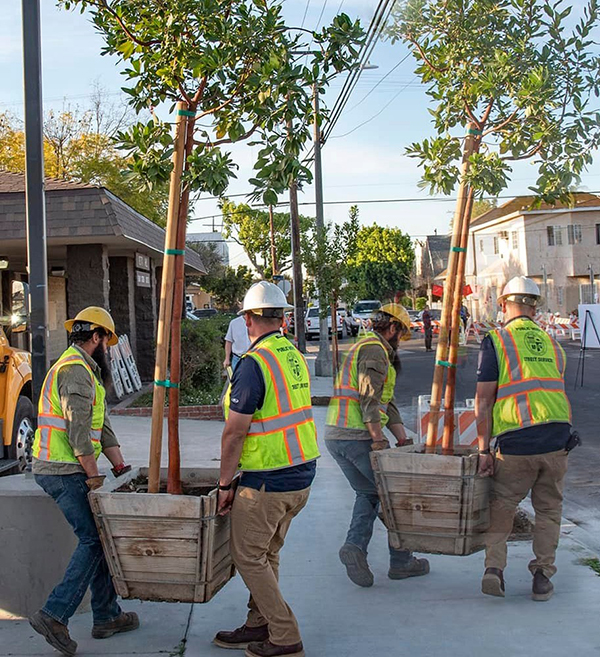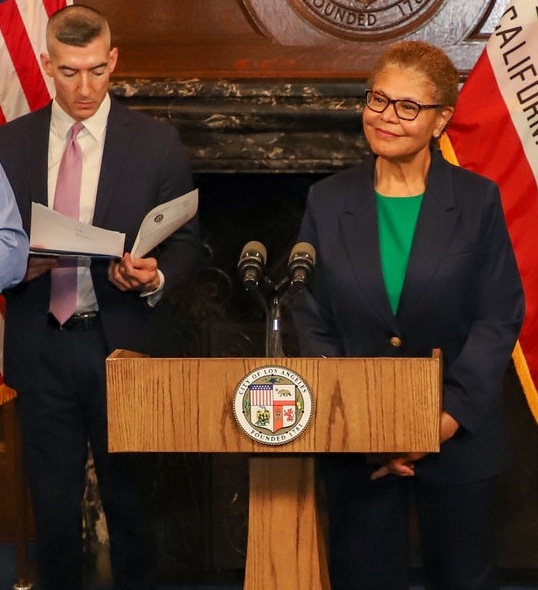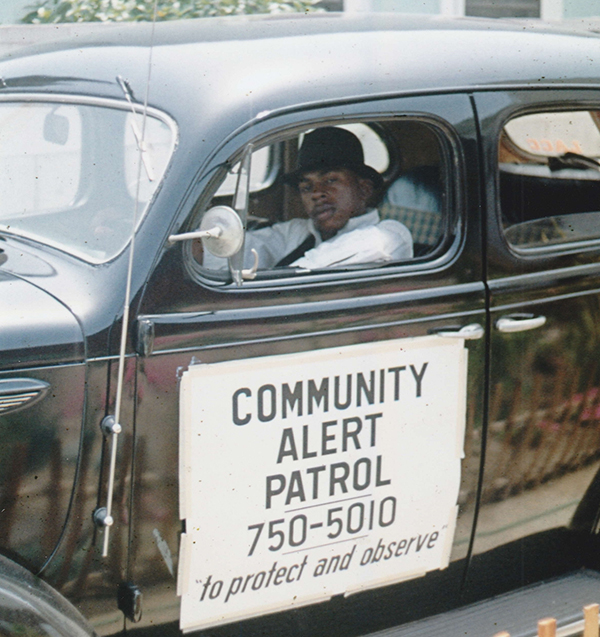By Ray Richardson
Contributing Writer
SOUTH LOS ANGELES — Growing concerns with climate change has prompted the Los Angeles Department of Public Works to expand its Urban Cooling Program, an initiative designed to help protect city residents during a projected surge in rising temperatures.
Research data from Mayor Eric Garcetti’s Green New Deal Plan indicate that L.A.’s average year-round temperature could exceed 95 degrees by 2041.
In response to the potential environmental crisis, Public Works crews are planning to plant more than 1,200 trees for shade and resurface streets with specialized cooling materials throughout the city’s 15 council districts.
“The studies show that L.A. is getting hotter,” said Craig Shaw, division manager and general superintendent of customer affairs for the Public Works Department. “At the rate we’re going, it will be less comfortable for people living here.”
The initial phase of the Urban Cooling Program began in 2016 with plans to resurface only one street in each of the 15 districts. City Council approval of a $4 million dollar budget paved the way for the resurfacing of at least 200 streets before work is scheduled to conclude on June 30.
Resurfacing is currently underway on several streets in District 8, including streets near Exposition Park. Streets and trees in District 9 are next on the list.
Crews from StreetsLA, a division of the Public Works Department, are planting trees and resurfacing streets.
“This project is an excellent example of innovation and collaboration,” District 8 Councilman Marqueece Harris-Dawson said in a statement. “And a tool we can use to provide relief to some of the hottest neighborhoods in the city while we address climate change.”
All of the streets scheduled for work are being resurfaced with materials that include a substance called “StreetBond Durashield,” an ingredient that gives streets a lighter color and does not absorb heat. Asphalt, the primary ingredient for streets, is exactly the opposite. Asphalt-laden streets generally absorb heat and help create a much warmer environment, particularly in warm-weather months.
Neighborhoods were selected based on research from the Trust for Public Land Climate Smart Cities Tool, the Google Environmental Insights Explorer Tree Canopy Map and Cal-Enviro-Screen. The data revealed locations of the hottest areas in the city that could benefit from the Urban Cooling Program.
Shaw said the program generated early results in 2016. Public Works officials were shown a satellite image that captured a resurfaced street in the Winnetka area of District 3. What the officials saw reassured them that the cooling plan could work.
“The image showed where we put in the cool pavement,” Shaw said. “We could tell it was much cooler in that area.”
Shaw added that crews have been approached by residents living on streets not targeted for resurfacing. Residents have asked for resurfacing and more trees on their streets. Shaw estimated that his office has gotten “20-30 requests” to have their areas involved in the Urban Cooling Program.
The Public Works Department places flyers on the front doors of houses and apartments to alert residents that the program is coming to their area. Shaw said the advance notice is to give residents a chance to decide on alternate routes before the work begins.
Much of the work requires crews to close off streets for several hours during resurfacing and tree planting.
Shaw said crews have been well-received when residents see them at work.
“It’s very satisfying to see us get embraced by communities,” Shaw said. “We know we’re impacting people’s health by what we’re doing. We wish we could do every street.”
For more information about the Urban Cooling Program and possible work in your area, go to http://bpw.lacity.org.
Ray Richardson is a contributing writer for The Wave. He can be reached at rayrich55@gmail.com.











